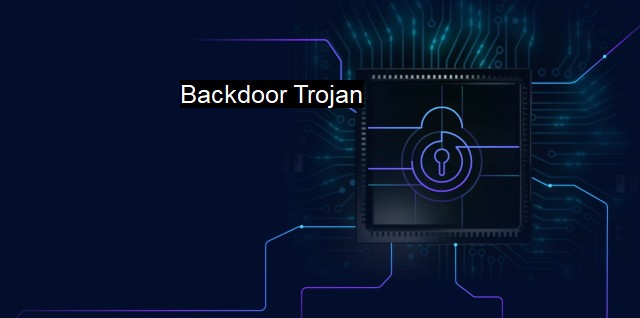What is Backdoor Trojan?
The Lurking Threat of Backdoor Trojans: The Silent Killer of Device Security in the Digital Age
A backdoor Trojan, in the context of cybersecurity and antivirus measures, is a malicious form of code or software that provides an attacker unauthorized and undetected access to a system. Like the mythological idea after which it's named, a backdoor Trojan is a form of cyber attack that infiltrates a targeted system in a deceptive manner, hidden within other software or disguised as benign code. Its primary purpose is to open a 'back door' into a system which allows the attacker to gain control, breach security parameters, and achieve unauthorized data access.One needs to understand that backdoor Trojans are one of the more significant digital threats in the current cybersecurity landscape. What separates a backdoor Trojan from other forms of malware is its functionality that entwines deceit and invasion. Whereas other forms of malware might merely damage a system or temporarily interrupt services, a backdoor Trojan has the capability to occur discreetly, having the affected system functioning as usual, allowing ongoing illicit activities without detection.
The operation of a backdoor Trojan can be classified into two phases. Firstly, it invades the target system typically through emails with attachments, application downloads, operating system vulnerabilities, or via existing malware on the system. Users may unknowingly encourage this process by clicking on suspicious links or browsing unsecure websites. The Trojan's entrance is silent – no immediate harm is apparent, and there are generally no disruption symptoms.
Once infiltrated, the backdoor Trojan commences the second phase of its operation - it plants a hidden passage or 'backdoor’, which lets the perpetrator remotely control the device, bypass security standards, modify system settings, disable antivirus software and firewalls, steal sensitive data, and even download other malicious software. the attacker can perform any action that the infected user or system administrator could, and worse, without leaving any hint of their presence.
Some backdoor Trojans even possess self-updating or morphing abilities, allowing them to evade detection by altering their own code. This hearkens to the concept of polymorphic malware, which continually alters its identifiable features making it more challenging to detect and remove.
To protect themselves from the potential threats of backdoor Trojans, users and organizations are advised to implement a series of well-rounded cybersecurity measures. These may encompass standard antivirus software, a solid and updated firewall, updated software systems, regular system audits, implementing user awareness on safe internet browsing practices, and avoidance of suspicious attachments and downloads.
Periodic scanning of the entire system is mandatory using trustworthy antivirus software. Advanced antivirus tools utilize heuristic analysis, which predicts and counters unknown threats by analyzing if there are any code pieces or programs that may have the characteristics of malware behavior. Increased vigilance about the system’s performance can even help identify potential infiltrations should the Trojan evade initial protective measures.
a backdoor Trojan is a powerful and hidden cyber threat capable of causing widespread havoc in secured systems. While they can be incredibly destructive, a combination of robust protection measures, user vigilance, and awareness can help in preventing such threats. Understanding the behavior and operational mode of such malware will be crucial in fighting against and ultimately defeating cyber threats such as backdoor Trojans. Instituting a robust cybersecurity infrastructure both at the individual and organizational level is, therefore, not just recommended, but necessary in our increasingly digital age.

Backdoor Trojan FAQs
What is a backdoor trojan?
A backdoor trojan is a type of malware that creates a secret entrance or "backdoor" into a computer system. This backdoor can be used to gain unauthorized access to the system, steal sensitive information, or remotely control the infected computer.How does a backdoor trojan infect a computer?
Backdoor trojans can infect a computer through various means, including email attachments, malicious websites, software downloads, social engineering techniques, and vulnerabilities in the operating system or applications.What are the dangers of a backdoor trojan?
A backdoor trojan can allow cybercriminals to steal sensitive information, such as passwords, financial data, and personal information. It can also be used to gain remote access to the infected computer, giving the attacker control over the system and the ability to install additional malware or launch attacks on other computers.How can I protect my computer from backdoor trojans?
To protect your computer from backdoor trojans, you should use a reliable antivirus software, keep your operating system and software up-to-date with the latest security patches, avoid downloading files from untrusted sources, and be cautious of suspicious emails or links. It's also important to use strong passwords and two-factor authentication to prevent unauthorized access to your accounts.| | A | | | B | | | C | | | D | | | E | | | F | | | G | | | H | | | I | | | J | | | K | | | L | | | M | |
| | N | | | O | | | P | | | Q | | | R | | | S | | | T | | | U | | | V | | | W | | | X | | | Y | | | Z | |
| | 1 | | | 2 | | | 3 | | | 4 | | | 7 | | | 8 | | |||||||